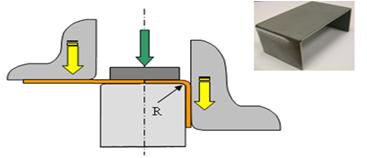Products
Product pages available in
EN - DE - FR - ES
Sustainability
News, events and stories
MartINsite® steels
Description
The MartINsite® steel family is an addition to ArcelorMittal's range of Advanced High Strength Steels. These steels enable lightweight structural elements to be created by a forming process such as roll forming.
Applications
Thanks to their excellent mechanical properties, these grades are particularly suitable for automotive safety parts for shock resistance. Typical parts are shown in the figure below:
- Front and rear bumper beams
- Door beam
- Side sill reinforcement
- Roof crossmember
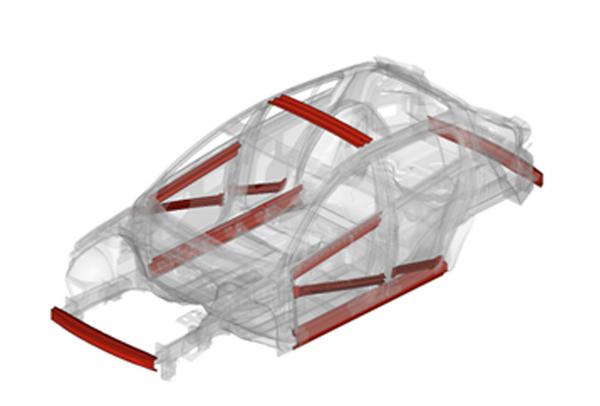
Typical parts for MartINsite® steels
Designation and standard
| Show all |
|
|
|
|
|
|---|---|---|---|---|---|
| ArcelorMittal name | Generic name | ArcelorMittal Code | Euronorms | VDA 239-100 | ABNT NBR |
| MartINsite® 1200 | MS1200 | MartINsite® 1200 | HCT1200MS | CR950Y1200T-MS | MT1200 |
| MartINsite® 1300 | MS1300 | MartINsite® 1300 | HCT1300MS | CR1030Y130T-MS (-UNC,-EG) | |
| MartINsite® 1500 | MS1500 | MartINsite® 1500 | HCT1500MS | CR1220Y1500T-MS (-UNC,-EG) | |
| MartINsite® 1700 | MS1700 | MartINsite® 1700 | HCT1700MS | CR1350Y1700T-MS (-UNC,-EG) |
The above table summarises, for information only, the cross-references between the ArcelorMittal product range, European standards and standard VDA 239-100.
Mechanical properties
| Show all |
|
|
|
|
|
|
|
|---|---|---|---|---|---|---|---|
| ArcelorMittal name | Generic name | Direction | Yield stress Rp0.2 (MPa) | Tensile strength Rm (MPa) | Type 1 Min. A50mm (%) | Type 2 Min. A80mm (%) | Type 3 Min. A50mm (%) |
| MartINsite® 1200 | MS1200 | RD | 950 - 1220 | 1200 - 1420 | 3 | 3 | 3 |
| MartINsite® 1300 | MS1300 | RD | 1030 - 1360 | 1300 - 1550 | 3 | 3 | 3 |
| MartINsite® 1500 | MS1500 | RD | 1220 - 1570 | 1500 - 1770 | 3 | 3 | 3 |
| MartINsite® 1700 | MS1700 | RD | 1350 - 1770 | 1700 - 2000 | 3 | 3 | 3 |
A80mm %: Percentage elongation after fracture using a specimen with gauge length L0 = 80 mm (ISO 6892-1 type 2 (EN20x80))
A50mm %: Percentage elongation after fracture using a specimen with gauge length L0 = 50 mm (ISO 6892-1 type 1 (ASTM12.5x50) or type 3 (JIS25x50)
A%: Percentage elongation after fracture using a proportional specimen with L0 = 5.65 (So)1/2
Ag %: Percentage plastic extension at maximum force
BH2: Increase in yield strength between a reference condition after a 2% plastic pre-strain and the condition obtained after heat treatment (170°C-20minutes)
-
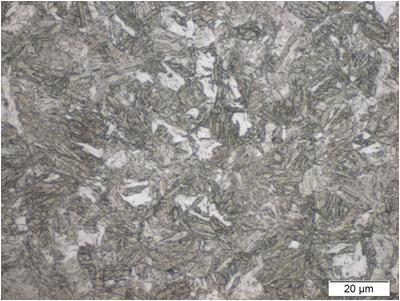
MartINsite® 1200 microstucture
-
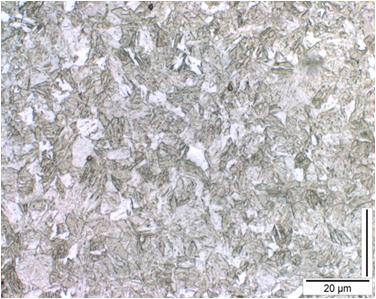
MartINsite® 1500 microstucture
Chemical composition
| Show all |
|
|
|
|
|
|
|
|
|
|
|
|---|---|---|---|---|---|---|---|---|---|---|---|
| ArcelorMittal name | Generic name | Max. C (%) | Max. Si (%) | Max. Mn (%) | Max. P (%) | Max. S (%) | Min. Al (%) | Max. Cu (%) | Max. B (%) | Max. Ti + Nb (%) | Max. Cr + Mo (%) |
| MartINsite® 1200 | MS1200 | 0.23 | 0.5 | 2.2 | 0.02 | 0.025 | ≥ 0.01 | 0.2 | 0.01 | 0.15 | 1.0 |
| MartINsite® 1300 | MS1300 | 0.28 | 1 | 2.2 | 0.02 | 0.025 | ≥ 0,010 | 0.2 | 0.01 | 0.15 | 1 |
| MartINsite® 1500 | MS1500 | 0.30 | 1 | 2.5 | 0.02 | 0.025 | ≥ 0,010 | 0.2 | 0.01 | 0.15 | 1 |
| MartINsite® 1700 | MS1700 | 0.35 | 1 | 3 | 0.02 | 0.025 | ≥ 0,010 | 0.2 | 0.01 | 0.15 | 1 |
Global availability
Under development Customer trials Commercial unexposed only Commercial exposed and unexposed
| Show all |
|
|
|
|
|---|---|---|---|---|
| ArcelorMittal name | Generic name | Uncoated (-UNC) | Electrogalvanized (-EG) | Jetgal® (-ZV) |
| MartINsite® 1200 | MS1200 | |||
| MartINsite® 1300 | MS1300 | |||
| MartINsite® 1500 | MS1500 | |||
| MartINsite® 1700 | MS1700 |
| Show all |
|
|
|
|
|---|---|---|---|---|
| ArcelorMittal name | Generic name | Uncoated (-UNC) | Electrogalvanized (-EG) | Jetgal® (-ZV) |
| MartINsite® 1200 | MS1200 | |||
| MartINsite® 1300 | MS1300 | |||
| MartINsite® 1500 | MS1500 | |||
| MartINsite® 1700 | MS1700 |
| Show all | |
|---|---|
| ArcelorMittal name | Generic name |
| MartINsite® 1200 | MS1200 |
| MartINsite® 1300 | MS1300 |
| MartINsite® 1500 | MS1500 |
| MartINsite® 1700 | MS1700 |
| Show all | |
|---|---|
| ArcelorMittal name | Generic name |
| MartINsite® 1200 | MS1200 |
| MartINsite® 1300 | MS1300 |
| MartINsite® 1500 | MS1500 |
| MartINsite® 1700 | MS1700 |
| Show all | |
|---|---|
| ArcelorMittal name | Generic name |
| MartINsite® 1200 | MS1200 |
| MartINsite® 1300 | MS1300 |
| MartINsite® 1500 | MS1500 |
| MartINsite® 1700 | MS1700 |
| Show all | |
|---|---|
| ArcelorMittal name | Generic name |
| MartINsite® 1200 | MS1200 |
| MartINsite® 1300 | MS1300 |
| MartINsite® 1500 | MS1500 |
| MartINsite® 1700 | MS1700 |
Under development
Customer trials
Commercial unexposed only
Commercial exposed and unexposed
MartINsite® steels with Electrogalvanised or Jetgal® coating have been optimised to provide excellent crash performance and corrosion protection, ensuring good resistance to hydrogen embrittlement.
Forming
MartINsite® steels exhibit good roll-forming, bending and hole-expansion behaviour.
For MartINsite® steel design rules, we recommend using bending radii greater than 3 times the thickness of the product.
Bending method: 90° edge forming
Please contact us for more information about forming MartINsite® steels in special thicknesses and with special coatings.
Welding
Suitability for spot welding
The MartINsite® range of steels has good resistance spot weldability. The welding range, determined in accordance with standard ISO 18278-2, is wide. The table below shows examples, for information only, of spot welding properties for MartINsite® similar welds in accordance with standard ISO 18278-2.
| Show all |
|
|
|
|
|
|
|---|---|---|---|---|---|---|
| ArcelorMittal name | Coating | Thickness (mm) | Nugget diameter (mm) | Pure tensile (kN) | Weld diameter (mm) | Tensile-shear (kN) |
| MartINsite® 1200 | 1.2 | 4.5 | 5 | 4.5 | 12.9 | |
| MartINsite® 1300 | EG | 1.2 | 4.5 | 7 | 5 | 13.6 |
| MartINsite® 1500 | EG | 1.2 | 4.1 | 4.3 | 4.1 | 13.1 |
| MartINsite® 1700 | EG | 1 | 4.4 | 3.8 | 4.7 | 17.1 |
Laser welding
Laser welding tests have revealed no particular difficulties.
ArcelorMittal can provide technical assistance in adjusting the welding parameters for all steels in the MartINsite® range.
Fatigue strength
MartINsite® steels exhibit good fatigue properties on account of their very high mechanical strength. By way of example, the 2 graphs below show Wöhler curves for these MartINsite® steels. They are expressed in terms of stress amplitude versus cycles to failure. They are calculated for two loading ratios: either tension-compression R=-1 or tension-tension R=0.1.
Wöhler curves or S-N curves for a variety of MartINsite® steels:
The graph below shows the oligocyclic fatigue or E-N curves for the same steels. The curves plot strain amplitude versus number of reversals to failure (one cycle corresponds to two reversals). Other high and low cycle fatigue data can be provided on request.
ArcelorMittal can provide a full database on the fatigue performance of MartINsite® steels.
Impact strength
As a result of their very high YS and UTS values, MartINsite® steels are particularly well suited for anti-intrusion parts.
MartINsite® steels have been characterised in the 3-point bending test using top hat cross-section specimens impacted at 30 km/h. The tests showed very good impact behaviour of these steels. The following graph gives, for information only, the minimum potential weight saving for these steels compared with an CR340LA steel.
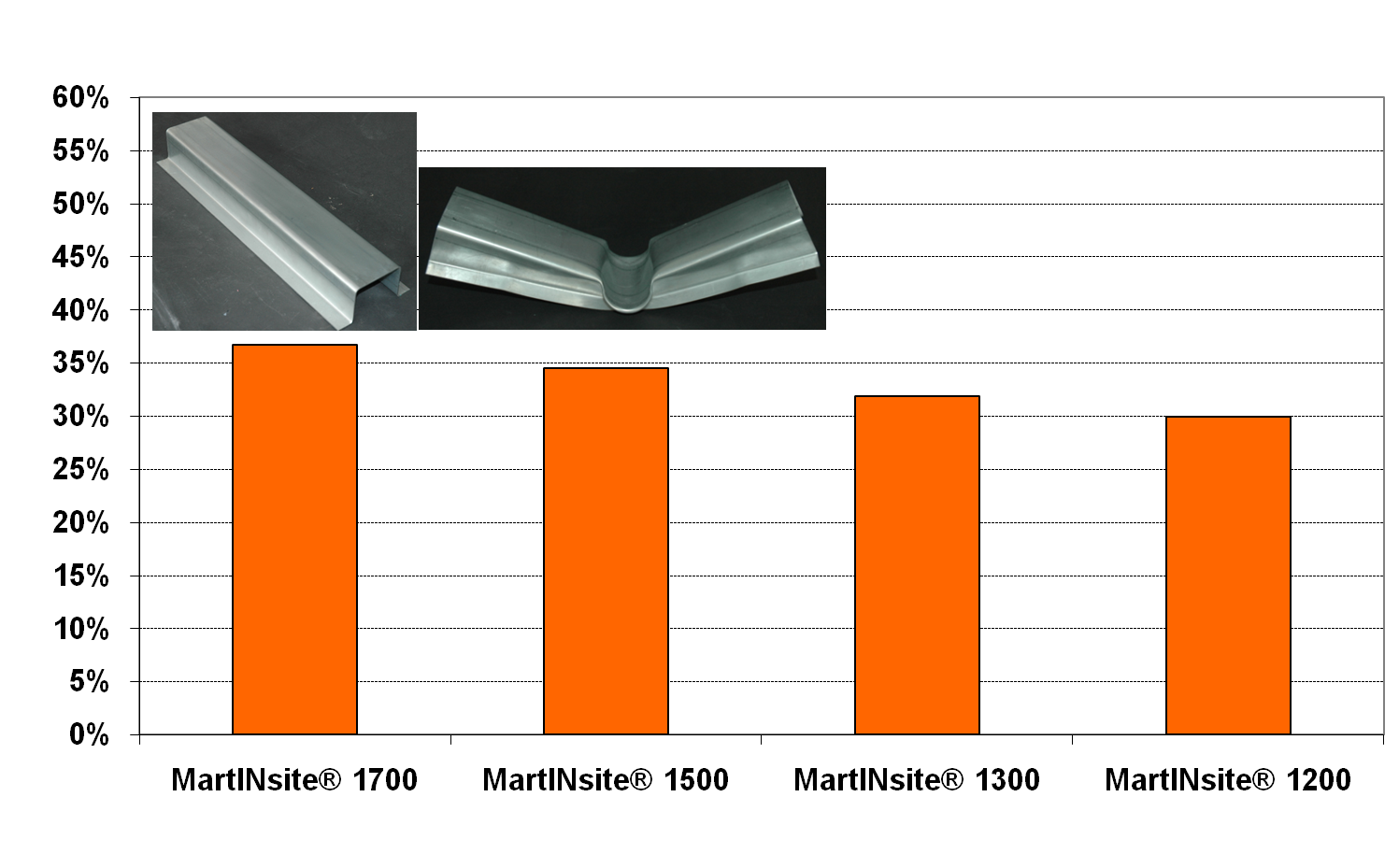
Potential weight saving compared to that of an HSLA 380 steel (reference)
